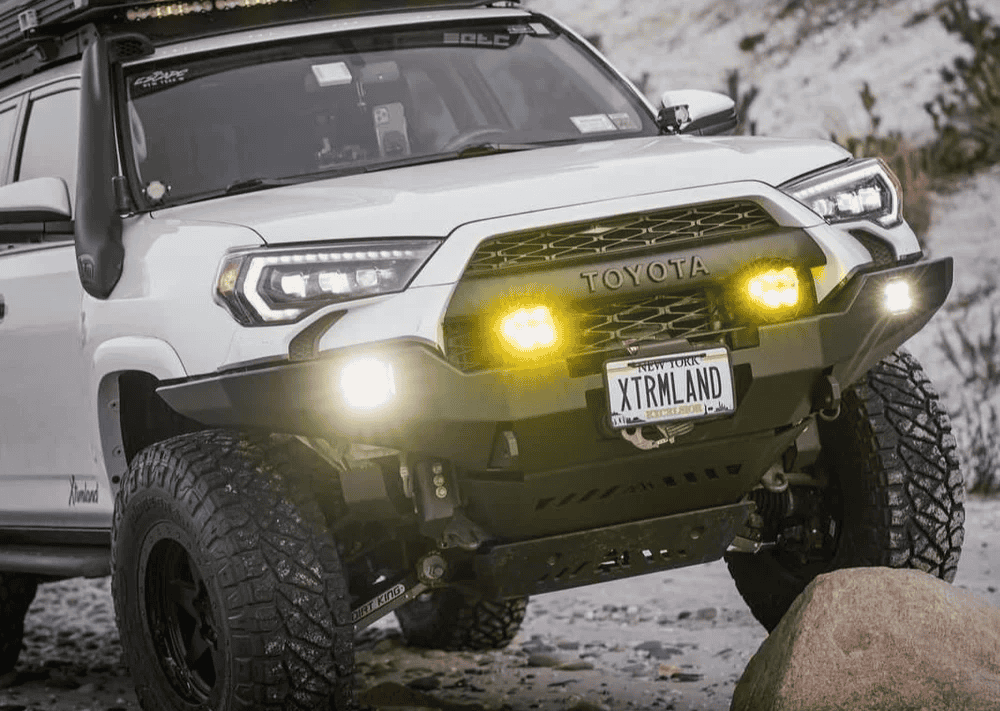Overland Vehicles

A trail rescue rig serves one job above all others: arrive reliably, stabilize the scene, and get everyone home safely. That means selecting a platform with enough payload for tools, medical supplies, water, power, and added protection without overloading the chassis. Traction and control come first, because most incidents happen where traction is scarce and maneuvering space is tight. Reliability matters as much as raw capability; cooling, braking, and electrical systems must handle low speed, high load work without complaint. Redundancy is the quiet hero of rescue work, so plan backup lighting, spare comms, and secondary recovery options before you need them.
Choose a platform with proven 4x4, real low range, and gearing that supports slow controlled movement under load. Locking differentials and quality all terrain tires offer predictable traction on loose rock, mud, or snow. Suspension should prioritize control and ground clearance while respecting gross vehicle weight limits once the rig is fully outfitted. Braking and cooling upgrades keep the vehicle steady during long winch pulls and steep descents. Electrical capacity is the heartbeat of the build, so a high output alternator and managed accessory power reduce stress on factory circuits.
Every trail rescue rig depends on a dependable winch and smart rigging. Match winch rating to gross vehicle weight with margin for mud and gradient, then add a synthetic line, protective sleeve, and a wired control to avoid battery interference. Rigging should be rated and labeled, stored cleanly, and chosen with a load plan in mind. Lighting needs to be layered: flood for working space, spot for scouting, and red or amber for scene safety. Power, water, and medical gear must be organized so the right item is always within reach.
Build a rigging kit that covers anchors, direction changes, and controlled pulls. Include soft shackles, tree savers, a pair of snatch blocks, recovery rings, equalizer straps, and a kinetic rope for gentle extractions. A shovel, traction boards, and a long reach jack expand options when winching is not ideal. Carry a compressor with a reliable hose system so you can air down for grip and air up for travel. Protect every textile and rope from abrasion and heat, and replace items that show wear before they fail.
A dual battery or dedicated accessory battery with a DC to DC charger keeps radios, scene lighting, and refrigeration running without stranding the vehicle. An inverter powers tools and chargers, while fused distribution and labeled switches prevent confusion at night. Store a minimum of a few gallons of water for patients and team members, plus a simple pump or gravity setup for quick use. Medical provisions should cover bleeding control, splinting, wound care, and hypothermia management; add a litter and thermal blankets for transport and shelter.
Gear cannot replace disciplined process. A clear scene size up, established roles, and radio discipline reduce chaos. Use a simple framework: secure the area, assess medical needs, stabilize vehicles, and plan the pull. Calculate line loads and angles before committing to a winch plan, and always protect anchors and lines with proper damping. After action reviews drive improvements, so log what worked, what failed, and what will change next time.
Carry layered communications. GMRS provides clear team traffic, ham adds range and repeater access where permitted, and a satellite messenger covers handoffs and emergency notifications beyond cell networks. Offline maps and reliable navigation ensure you can reach and exit the scene even after a detour, washout, or closure. Waypoint critical junctions and log tracks for later review. A small whiteboard or notepad helps document coordinates, patient details, and staging instructions when the pace picks up.
Building and maintaining a capable trail rescue rig takes planning, testing, and careful integration. If you want experienced help tailoring a mission focused system with clean wiring, strong fabrication, and field serviceability, explore our Overland rigs. Teams who need integrated racks, lighting, power, storage, and recovery systems under one roof can learn about a Custom overland upfit. Curious about our approach to safety, quality, and client support before and after delivery? Read Why choose OZK Customs.
You know your terrain, your response window, and the people who rely on you. We know how to turn that mission into a sorted rescue platform built for real conditions in Fayetteville, Arkansas, with thoughtful power, lighting, storage, and recovery integration that stays reliable when the trail gets rough. Share your mission profile, and we will design and build a setup that works the first time and every time.
Build your rescue ready rig with a team that understands recovery, safety, and real trail conditions. Tell us how you operate and we will spec, fabricate, and integrate the systems that match your mission. Submit the form to start your custom overland upfit and schedule a consult with OZK Customs in Fayetteville, Arkansas.
ADDRESS:
6159 E Huntsville Rd, Fayetteville, AR 72701
PHONE:
(479) 326-9200
EMAIL:
info@ozkvans.com